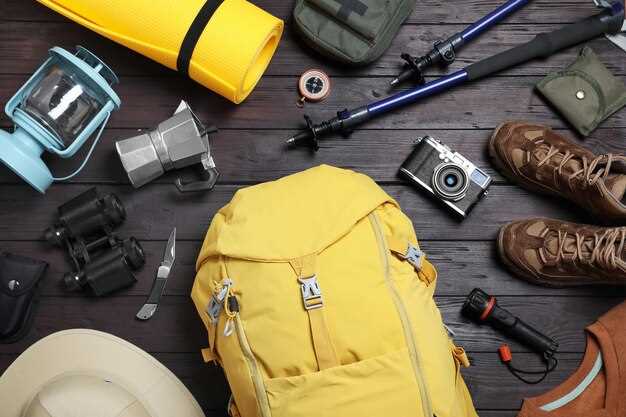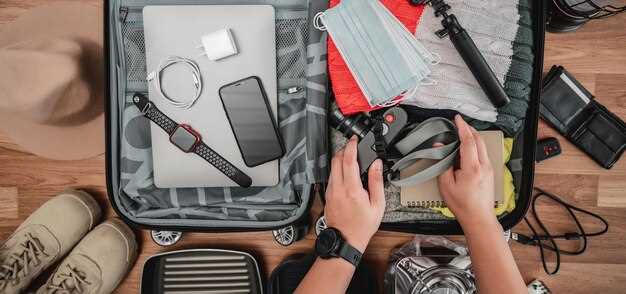
When it comes to outdoor adventures, proper packing is essential for a successful multi-day expedition. The right gear can make all the difference in your comfort, safety, and overall enjoyment of the journey. Adequate preparation not only enhances your experience but also ensures that you’re equipped to handle the unpredictable nature of the great outdoors.
In this guide, we will explore a variety of smart packing strategies tailored specifically for extended expeditions. From selecting the right gear and food to organizing your backpack for optimal weight distribution, these tips will help you streamline your packing process. We aim to assist both seasoned adventurers and newcomers alike in enjoying their time in nature to the fullest.
Understanding the essentials of packing effectively is crucial. It goes beyond just what to bring; it involves knowing how to pack intelligently to maximize space and efficiency. Through careful consideration and practical strategies, you can ensure your outdoor experience remains memorable for all the right reasons.
Choosing the Right Backpack Size for Your Trip

Selecting the appropriate backpack size is crucial for successful packing during multi-day outdoor expeditions. The right size influences not only how much gear you can carry but also your comfort level on the trail.
Backpacks are typically categorized by their capacity, measured in liters. For a weekend trip, a pack ranging from 40 to 60 liters is usually sufficient, allowing ample room for sleeping gear, clothing, and food. For longer adventures, consider backpacks between 60 to 80 liters, which provide extra space for additional supplies such as cooking equipment and water purification systems.
It’s essential to consider your personal packing style. If you prefer to carry lightweight gear and travel minimalist, a smaller pack can suffice. Conversely, if you tend to bring extra items or require specialized equipment for outdoor activities, opting for a larger pack may be beneficial.
Additionally, think about how you distribute weight in your pack. Proper organization and padding can make larger packs more manageable. Features like adjustable straps and hip belts can enhance comfort, allowing you to carry heavier loads efficiently without straining your back.
Finally, remember to try on various sizes while wearing gear you plan to take on your trip. This practice ensures the backpack fits snugly and provides the necessary support for your outdoor journey.
How to Pack for Weather Variability in the Outdoors
Packing for outdoor expeditions requires careful consideration of the unpredictable nature of weather. A well-planned packing strategy can significantly enhance your comfort and safety during a multi-day trip. Here are essential tips for addressing weather variability.
1. Layering System: Always adopt a layering system to adapt to changing temperatures. Start with a moisture-wicking base layer that keeps sweat at bay. Follow with an insulating layer, such as a fleece or down jacket, which provides warmth. Finally, include a waterproof and breathable outer layer to protect against rain and wind. This combination allows for flexibility; you can easily add or remove layers as conditions change.
2. Versatile Clothing: Choose clothing items that serve multiple purposes. For instance, pants that can convert into shorts are ideal for sudden warm spells. Additionally, consider packing garments made of quick-drying materials, which are beneficial if you encounter unexpected rain.
3. Weather-resistant Gear: Invest in high-quality outdoor gear that offers protection against the elements. A durable, waterproof tent and a reliable sleeping bag rated for lower temperatures can be lifesavers if night temperatures drop unexpectedly. Always check gear ratings and features to ensure they meet your expedition’s potential conditions.
4. Compact Packing: Use packing cubes or stuff sacks to organize your gear while saving space. This method allows you to access specific items quickly, which is particularly useful when weather changes occur suddenly and you need to adjust your clothing or gear promptly.
5. Emergency Supplies: Prepare for extreme weather by including emergency supplies in your packing list. A lightweight emergency blanket, extra food, and a portable weather radio can be invaluable if you get caught in severe conditions.
6. Regular Weather Checks: Finally, monitor weather forecasts leading up to and during your expedition. This will help you make informed decisions about your packing and any last-minute adjustments you might need. Being well-informed reduces uncertainty and keeps your adventure enjoyable.
By employing these smart packing strategies, you can confidently handle the variable weather conditions often encountered in outdoor adventures. A thoughtful approach to packing will enhance your overall experience and readiness for any surprises nature may present.
Prioritizing Lightweight Gear Without Sacrificing Comfort
When embarking on multi-day outdoor expeditions, choosing lightweight gear is essential for ease of travel and efficiency. However, it is equally important to ensure that comfort is not compromised. Here are some effective tips to strike that balance:
- Evaluate Essential Gear: Before packing, create a comprehensive list of necessary items. Focus on essentials to minimize weight.
- Select Multi-functional Equipment: Opt for gear that serves multiple purposes, such as a cooking pot that can also be used for eating or a jacket that functions as insulation and a rain shell.
- Lightweight Fabrics: Choose clothing and gear made from lightweight materials, such as nylon or polyester, which provide durability without added weight.
- Packable Essentials: Look for items that pack down small and are lightweight, like sleeping bags, inflatable tents, and compact sleeping pads that still offer comfort during rest.
- Choose the Right Footwear: Invest in a pair of lightweight, supportive shoes or boots designed for hiking. Ensure they fit well to prevent discomfort during long walks.
- Prioritize Comfort in Sleep Gear: A good night’s sleep is crucial. Consider a lightweight sleeping pad that offers insulation and cushioning.
- Use Compression Bags: These bags help reduce the volume of clothing and sleeping bags, allowing for more space and less weight in your pack.
- Balance Hydration Needs: Water is essential; carry a lightweight water filter instead of large bottles. This allows for refilling on the go.
In conclusion, prioritizing lightweight gear does not mean sacrificing comfort on your outdoor adventures. By selecting multi-functional, packable, and lightweight equipment, you can ensure an enjoyable and efficient expedition without the burden of excessive weight.
Organizing Your Food Supply for Optimal Nutrition
When preparing for multi-day outdoor expeditions, effective packing of your food supply is crucial for maintaining optimal nutrition. Start by selecting foods that offer a high caloric density while being lightweight and easy to carry. Opt for items like nuts, dried fruits, and energy bars, which pack a lot of nutrition in minimal space.
Plan your meals ahead of time to ensure a balanced intake of carbohydrates, proteins, and fats. Create a meal schedule so that you consume a variety of nutrients each day. Include whole grains, such as quinoa or brown rice, which provide sustained energy. Combine these with protein sources like jerky, canned tuna, or plant-based options like beans and lentils.
Utilize vacuum-sealed bags or lightweight containers to minimize bulk and prevent spoilage. Label each package with meal details and cooking instructions to simplify meal preparation during your expedition. When it comes to packing, arrange your food items by meal and priority. Store frequently used items on top for easier access.
Incorporate hydration into your food supply plan. Carry electrolyte tablets or powder to add to your water, helping to maintain balance and enhance overall energy levels. Consider including instant meals that require minimal cooking, allowing you to rehydrate and eat quickly after a long day.
Lastly, make sure to pack out any waste responsibly. Plan for proper disposal, as maintaining the integrity of the outdoor environment is part of responsible outdoor packing. By organizing your food supply effectively, you will ensure optimal nutrition and enjoy your expedition to the fullest.
Clever Clothing Strategies for Layering and Quick Drying
When planning for multi-day expeditions, selecting the right clothing and effectively packing them can significantly enhance your comfort and efficiency. Here are several strategies to ensure you stay dry and manage temperature fluctuations:
- Understand the Layering System:
- Base Layer: Choose moisture-wicking fabrics that draw sweat away from your skin. Look for materials like merino wool or synthetic fibers for breathability.
- Mid Layer: Opt for insulation such as fleece or down, which retains body heat while allowing moisture to escape.
- Outer Layer: Select a waterproof and windproof shell to protect against the elements. Consider lightweight options that pack down small.
- Quick Dry Fabrics:
Pack clothing made from quick-drying materials to facilitate washing and drying during your expedition. Look for:
- Polyester
- Nylon
- Merino wool (especially lightweight varieties)
- Packing Tips:
- Roll Instead of Fold: Rolling clothes reduces wrinkles and saves space in your pack.
- Use Compression Bags: These bags minimize bulk, making it easier to fit multiple layers into your packing system.
- Organize by Function: Separate items into categories such as hiking, sleeping, and lounging to streamline your packing and quick access during the trip.
- Adaptability:
Bring versatile pieces that can be layered or removed easily. Consider clothing that can transition from day to night or from high activity to relaxation:
- Convertible pants that zip off into shorts
- Multi-use jackets with removable linings
Implementing these clever clothing strategies will make your expedition more comfortable while ensuring you’re prepared for various weather conditions and activities.
Utilizing Packing Cubes and Compression Bags for Space

When preparing for multi-day outdoor expeditions, efficient packing is crucial for maximizing space and minimizing weight. Packing cubes and compression bags serve as essential tools in achieving this goal, allowing for organized storage and streamlined packing processes.
Packing cubes are designed to compartmentalize items within your backpack or luggage. They come in various sizes and are ideal for categorizing clothing, gear, and accessories. By separating items, packing cubes not only help keep your belongings organized but also make it easier to access specific items without disturbing the entire contents of your bag.
Compression bags, on the other hand, are particularly useful for bulkier items such as jackets and sleeping bags. These bags can significantly reduce the volume of clothing and gear by removing excess air. This feature is especially beneficial for outdoor trips where space is limited, allowing you to allocate more room for other essential items.
| Item Type | Benefits |
|---|---|
| Packing Cubes | Organization, easy access, space-saving, multiple sizes |
| Compression Bags | Significant space reduction, lightweight, protects items from moisture |
Combining both packing cubes and compression bags offers an efficient packing solution. Start by utilizing compression bags to minimize the bulk of your essential items, followed by organizing the remaining gear in packing cubes. This method not only optimizes available space but also allows for better weight distribution within your pack, enhancing overall comfort during your outdoor adventure.
In conclusion, incorporating packing cubes and compression bags into your packing strategy can greatly improve your experience on multi-day expeditions. Their functionalities complement each other, ensuring that you leave for your outdoor adventure equipped and organized.


